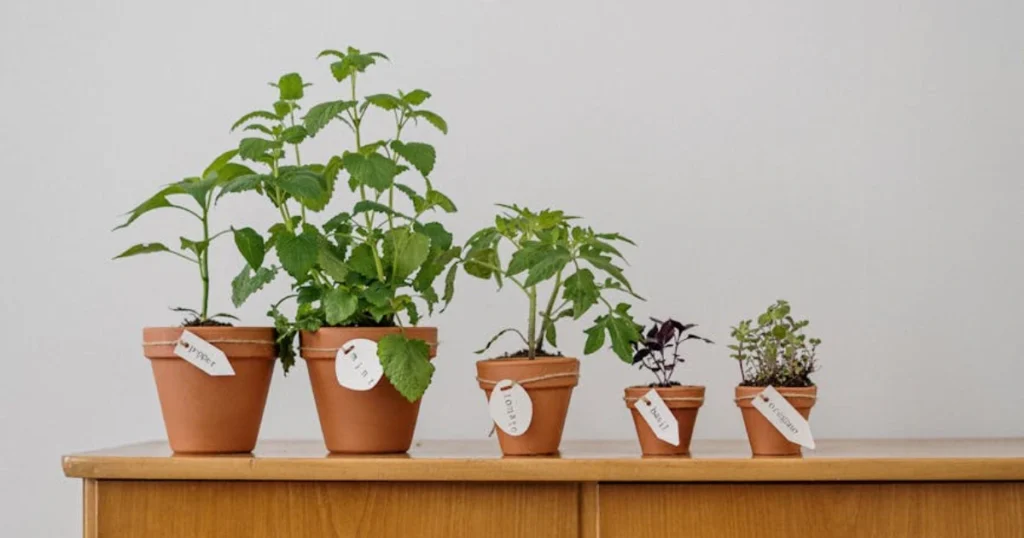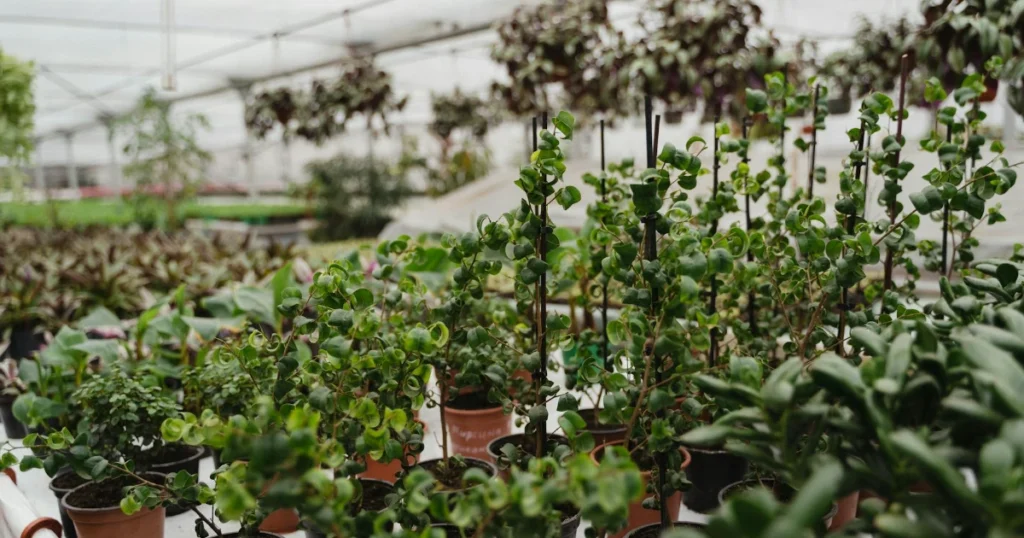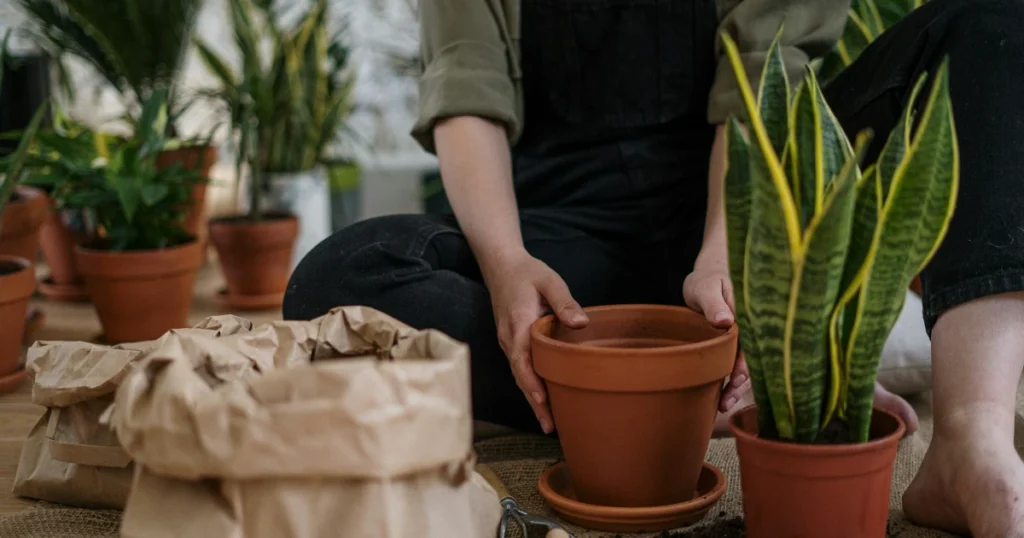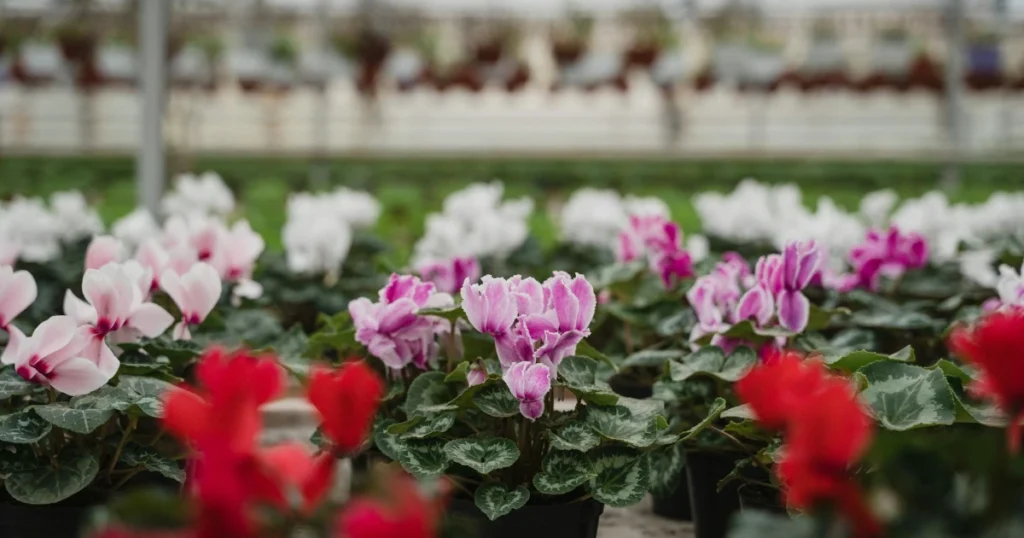Do you want to have fantastically fresh foliage at your fingertips? An indoor herb garden might be the right choice, offering the aroma of lush growing and fresh-cut indoor herbs 365 days a year.
Other than asking ourselves why we didn’t start one earlier, there really are no drawbacks to growing your own indoor herb garden. Having the freshest herbs at a fraction of the cost is tops on that list.
You can buy pre-cut herbs at the store, but growing your own means you have the freshest ingredients possible. You’ll eat better too with fresh herbs to add on a whim to any dish. Meals take on a whole new flavor. You’ll start to tailor your meal choices to match the herbs you’re growing resulting in healthier options and infinitely more taste.
There’s numerous psychological and physiological benefits to having growing greenery in your home. Add in the fact that it’s delicious and that you can eat it.
Checklist for Starting Your Indoor Herb Garden
Before we get into the big list of individual herb choices, let’s go to the checklist of the things that we need to make that happen.
- Soil
- Water
- Light
- A container

Soil
Although the list of herbs is vast and varied, they all pretty much thrive in the same soil. It should be loose, airy, rich in nutrients, drain well, but retain water, and generally sterile.
Avoid the temptation to use your own compost or garden soil. Bringing outside soil indoors is always a bad idea. Pest outbreaks are magnitudes more severe indoors as the selective pressures of outdoor life are removed.
With nothing to keep them in check, an outbreak of aphids, spider mites, or even fungus gnats could be devastating. Start with a quality potting mix designed for indoor container gardening.
Water
You’d be surprised to learn how little water it takes to sustain a vibrant healthy indoor herb garden, but they always do need to be kept moist. Overwatering plants especially indoors and especially with beginner gardeners is the single biggest cause for failure.
Scale back the watering to weekly or even less for best results.
Containers
Containers play such a huge role in our success. All too often we’ll choose aesthetics over function when growing indoors. Don’t make this mistake with herbs. Their containers must be able to drain excess water for the plants to live.
Make your own drainage holes if you see that the container is lacking them. A quarter inch is just fine, spacing the holes three to four inches apart.
As for container size it really is dealer’s choice. Herbs can grow amazingly large in just a simple small pot due to their highly efficient fibrous root systems. Go larger if you intend to mix several herbs together which is totally fine because most of these guys have the same growing requirements.
Light
Light is the biggest requirement. For your herbs to look, feel, and taste their best, they need light. Six hours a day or more of real full spectrum light is recommended. For a lot of us, this means a sunny window is all we need, and for others we may have to resort to supplementing with an artificial grow light.
Advances in LED technology means that if you do need supplemental light now more than ever it’s affordable, they’re efficient, and most importantly they’re effective. Grow lights work and they come in every shape size and wattage that you could possibly need.

Growing Your Indoor Herb Garden
The actual growing of the indoor herb garden is also done in parts as well. Even though the adult plants have similar requirements, the seeds sprout and germinate at different rates.
That brings us to our first decision. Do we want this magical all-in-one harmonious mixed herb garden or do we want individual plants that are interchangeable and modular where we can plant what we want when we want.
Functionally, separate puzzle pieces is going to win hands down allowing you to simply change out spent plants, add on to an existing garden with ease, and experiment with different varieties and you can do all this without upsetting the overall herb garden.
Planting an All-in-One Herb Garden
Even though our ultimate goal is a harmonious group of delicious herbs, it’s not going to start out that way. Even a multi-planted setup is going to have its component parts grown separately. Let’s get those components started so that they can grow while we set up our main container.
Start out most herbs as either plugs or really small starter plants using a quality seating mix either store bought or one you make yourself. Most herb seeds are sewn very shallow. Generally right around 80 degrees Fahrenheit is the optimum range to sprout herb seeds. We won’t need to grow the actual plants nearly this warm but for sprouting it’ll give us the best results.
For size depth is ubiquitous and anything above six inches tall will be just fine. Herbs do have extensive root systems but rarely that singular taproot that dives deep into the soil. I like to give each herb plant a space of about 16 square inches all to themselves basically four inches all the way around.
Most multi-plant herb gardens are planted with an expiration date. It’s just a reality. So if you squeeze in a few more plants than you really have room for that’s okay too.
Just like our starter pots we must make sure that the planters drain water. We’re going with a store-bought mix designed for containers. This soil will be slightly coarser than the seeding mix though as well it’s going to have significantly more nutritional value.
Once filled a great way to get the conditions just perfect is to pre-soak the soil just for a couple hours. Let it soak up as much water as it’ll hold. This is going to allow us to plant the herbs and leave them be and not have to water them for up to two weeks.
If your herbs are in plug form simply fill up the pot the whole way and make plug-sized holes. Drop them in at the spacing we discussed and compressed slightly to finish the planting. If you’ve gone a larger plant route fill in the bottom of your planter box to a point where the root color of your starter plants is slightly below that of the top of the container. Place your starter plants inside spaced accordingly and then backfill with that same potting mix.
Keep the plants well lit either a sunny window or an artificial grow light for at least six hours a day or more. Also keep them at room temperature. Herbs tend to grow at a nice steady rate at around 70 degrees Fahrenheit.

Planting Individual Herb Containers
By far the easier way to grow and maintain an indoor herb garden is to keep everything separate meaning one variety of herb one plant per container. Each plant is self-contained and growing independently. This allows us to interchange plants and pots freely as some plants become spent while others are still going.
Each plant is only dependent on itself and with this individualized attention it makes life so much easier on the grower. If you’re just starting out this is the method that I’d recommend hands down.
You can plant them directly into their final containers no transition steps necessary. If it doesn’t work out or it’s a poor specimen simply try again. Each separate container doesn’t affect the one next to it which is the brilliance of doing it this way.
You can go large such as these six by six by eight cedar boxes or smaller like these little stainless steel sets. Obviously some herb varieties grow bigger than others so pick your containers to match the plant.
Seeding is much the same in that the seeds are normally planted shallow and kept at around 80 degrees Fahrenheit during those first few vulnerable days. Because of the high temperatures there’s a real risk of these seeds sprouting and then drying out. To combat this after your seeds are planted place a piece of wet paper towel over top of the soil keeping it moist until germination and then even a few days after. Let those little taproots find their way down and get the plants fully established.
For most herbs seeded directly in their final containers because we’re not transplanting we can selectively harvest once the plants get their third set of true leaves.
As your herbs mature and become fully grown they’ll actually benefit from this harvest. This pruning is going to encourage new growth and keep the plants from becoming unruly. Just by continually harvesting the leaves you’re keeping the plants healthy and constantly growing new foliage in the process that’s the beauty of herbs.
The end of a herb plant is when it starts to flower. Regular pruning can delay bolting for quite some time so ironically by cutting down the plant and enjoying the leaves we’re extending the indoor crops for even more harvest in the future.
When harvesting from an adult herb plant the general rule of the thumb is to take no more than one third of the leaves or stems at a time. Continual regular harvest is the ultimate goal with an indoor herb garden.
All this lush growth and continual harvests comes at a cost. Because they’re grown in relatively small containers and tend to produce a lot of foliage which is what we’re after your indoor herbs will need feeding. Almost universally a low-dose liquid organic boost is the go-to choice.

Top 8 Indoor Herbs
The list of herbs is long with each one more amazing than the next. Of all the ones I’ve grown indoors over the years, there’s eight that I keep coming back to without a doubt:
- Basil: This Mediterranean member of the mint family is a staple of indoor gardening. Germinate basil quite shallow almost right at the surface at warm temperatures up to 80 to 85 degrees Fahrenheit. Keep basil at room temperature or slightly above and try to give them six hours or more of sunlight a day.
- Cilantro: Native to southwest Asia this leafy annual is the epitome of fresh. Seed your cilantro the same way you do basil right on the surface with just a skim coat of soil on top. The seeds are going to sprout within a week. Cilantro just thrives at moderate even temperatures and it’s less likely to flower if you keep it cooler. Using that same high nitrogen booster feed your cilantro once a month usually after harvest.
- Rosemary: There are dwarf varieties available so we can definitely grow this guy inside. Give rosemary the biggest pot you can and definitely don’t over water them.
- Thyme: As a crawling shrub this mediterranean aromatic is very tolerant of a range of conditions and it’ll excel in an indoor setting. Thyme thrives indoors and even though the seeds are super tiny they’re really easy to grow from.
- Chives: As a member of the onion family, chives sprout fast in and around 5 days and you know what they grow even faster. Sow the seeds in groups of 10 to 15 and harvest by cutting them down all the way to within an inch of the soil. They’ll come back many times over giving you fresh chivey flavor all winter long.
- Arugula: Grown much like small lettuce sew your arugula heavy right at the surface. Keep moist in the beginning to prevent those delicate shoots from drying out. Arugula performs best when the temperatures are below 70 degrees Fahrenheit.
- Oregano: A completely underrated indoor herb in my opinion. A member of the mint family oregano is actually a perennial except in colder climates like mine where it’ll go dormant in the winter and then come back on its own in the spring. Grow your oregano in a small pot in a super sunny windowsill, water sparingly, and pick the biggest leaves as needed.
- Dill: Dill is an excellent indoor herb. It grows fast, it’s easy to care for almost no pests and it has fantastic flavor. Give your dill plant at least a one gallon pot to support this rather large annual herb. Constantly harvest the outside leaves to keep your dill plants manageable and to prevent flowering.
To wrap up, there’s nothing better than picking fresh herbs off the plants that you grew yourself in your very own home. That self-satisfaction is superseded even by the increase in flavor and the savings in both money and the waste of buying at the store. There’s no better time than now to start your indoor herb growing endeavors!